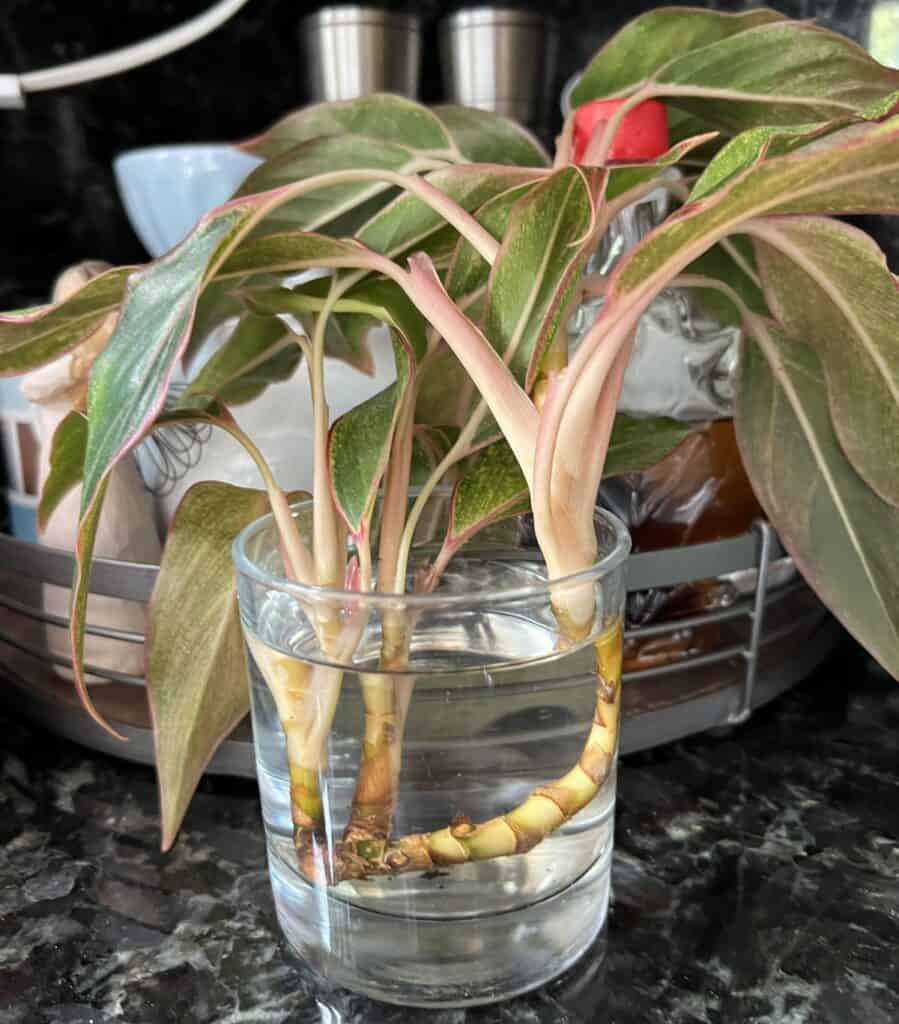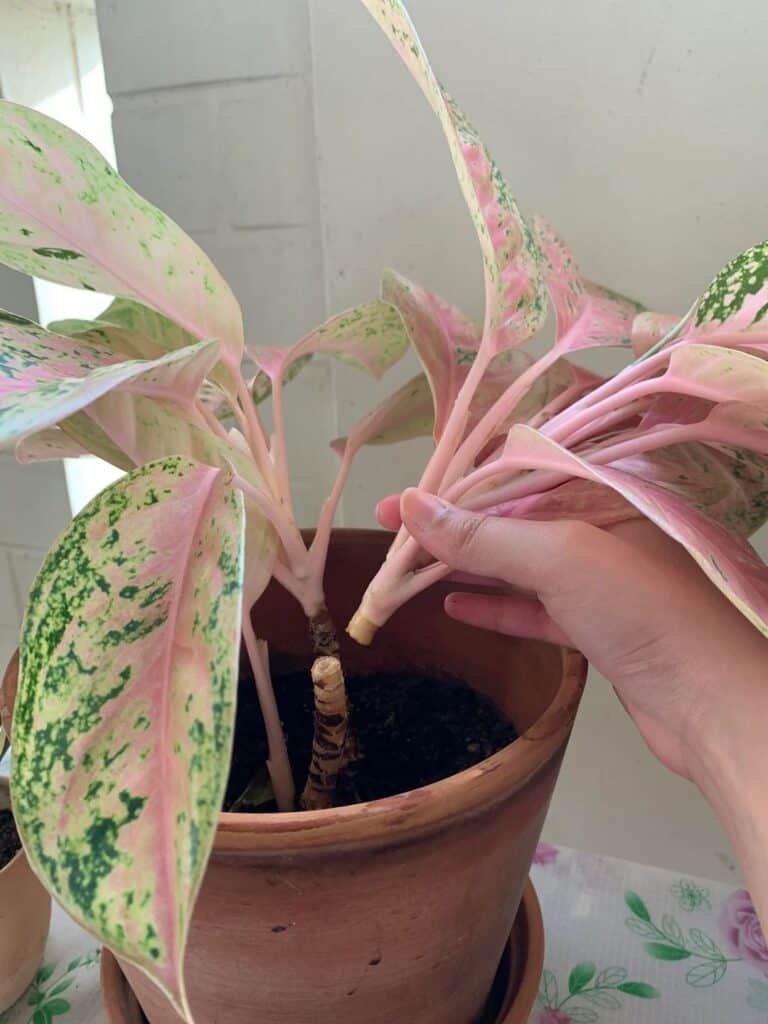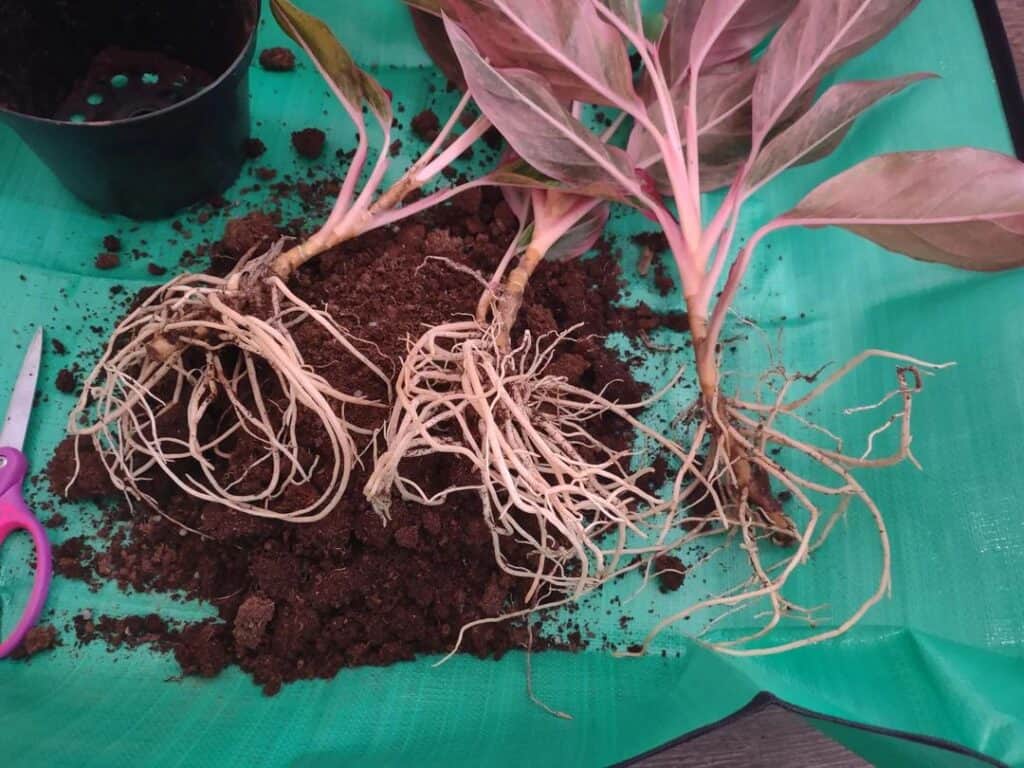Aglaonema, also known as Chinese evergreen, is one of the easiest houseplants to propagate—and one of the most rewarding! Whether you’re growing aglaonema pink, red Chinese evergreen, or the striking aglaonema pictum tricolor, propagation lets you expand your collection and share your favorite varieties with others.
In this beginner-friendly guide, you’ll learn how to propagate aglaonema step by step, using methods that work for most aglaonema varieties.
✂️ Why Propagate Aglaonema?
Propagation is perfect if:
- Your aglaonema plant is getting leggy or overgrown
- You want to multiply rare aglaonema varieties like aglaonema rotundum or aglaonema lady valentine
- You’re styling aglaonema centerpieces or building a Chinese evergreen plant collection
- You just love watching new roots grow!
🌿 Best Methods for Propagating Chinese Evergreen
There are three main ways to propagate aglaonema:
1. Stem Cuttings in Water

Perfect for aglaonema pink, aglaonema red, and other colorful varieties.
Steps:
- Choose a healthy stem with at least one leaf and a node.
- Cut just below the node using clean scissors.
- Place the cutting in a jar of water, keeping the node submerged.
- Change water every few days.
- Roots should appear in 2–4 weeks.
- Once roots are 1–2 inches long, transfer to soil.
2. Stem Cuttings in Soil

Ideal for aglaonema modestum and aglaonema silver queen.
Steps:
- Take a cutting with a node, just like in water propagation.
- Dip the cut end in rooting hormone (optional).
- Plant directly into moist, well-draining soil.
- Cover with a plastic dome or bag to maintain humidity.
- Keep in bright, indirect light.
- New growth usually appears in 4–6 weeks.
3. Division

Best for mature aglaonema plants like aglaonema spring snow or aglaonema maria.
Steps:
- Gently remove the plant from its pot.
- Separate the root ball into sections, each with roots and leaves.
- Repot each section into fresh soil.
- Water lightly and keep in a warm, humid spot.
🪴 Aftercare Tips for New Aglaonema Plants
Once your cuttings or divisions are planted:
- Keep soil lightly moist but not soggy
- Use self-watering aglaonema pots for consistent moisture
- Avoid direct sunlight while roots establish
- Mist occasionally to boost humidity
- Fertilize lightly after 6–8 weeks with aglaonema plant food
🌸 Which Aglaonema Varieties Propagate Best?
Here are a few beginner-friendly favorites:
|
Variety Name |
Propagation Method |
Notes |
|---|---|---|
|
Aglaonema Pink Dalmatian |
Water or Soil |
Fast rooting, vibrant foliage |
|
Aglaonema Silver Bay |
Division |
Easy to separate and repot |
|
Aglaonema Siam Aurora |
Water |
Great for colorful leaf cuttings |
|
Aglaonema Cutlass Plant |
Soil |
Hardy and adaptable |
|
Aglaonema Chocolate |
Division |
Unique color, slow grower |
🧪 Bonus: Propagation Troubleshooting
- No roots after 4 weeks? Try warmer temperatures or switch to soil.
- Leaves drooping? Increase humidity or trim excess foliage.
- Mold on soil? Improve airflow and reduce watering.
🌿 Final Thoughts
Propagating Chinese evergreen plants is a fun and simple way to grow your aglaonema collection. Whether you’re working with aglaonema pink star, red aglaonema, or aglaonema silver queen, these propagation methods will help you create lush, vibrant displays indoors.
Ready to try it? Grab your scissors and start multiplying your favorite aglaonema varieties today!
